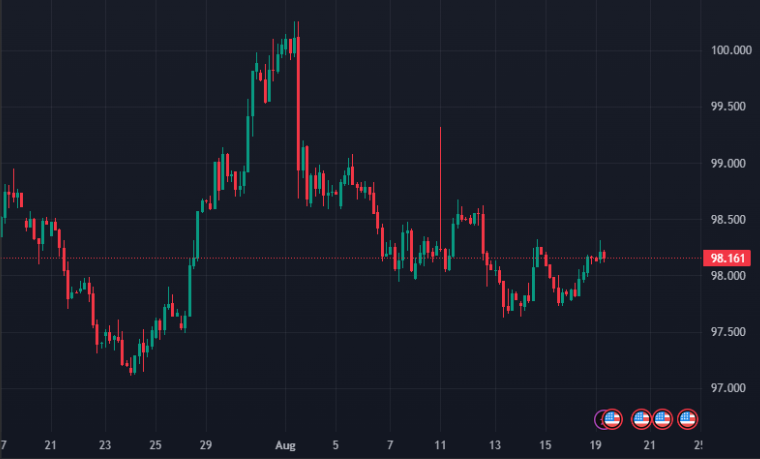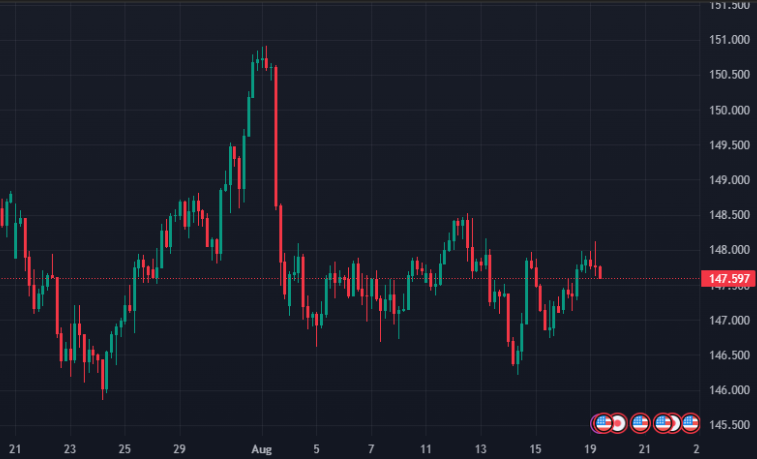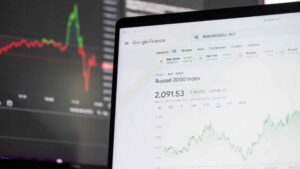Major currencies such as the US Dollar, Japanese Yen, British Pound, Euro and Australian dollar have been driven by domestic and global factors including economic data, central bank policies and geopolitical developments.
US Dollar: Caught Between Fed and Geopolitics
The US dollar remains pressured as financial markets weigh on mixed economic data. Hotter than expected PPI data and strong retail sales are trying to reduce expectations of Fed rate cuts.
Speculation of rate cuts rose due to the weak July NFP report and soft CPI for July. Traders have priced in an 84.8% chance of a quarter point rate cut in the FOMC meeting in September. ⁽¹⁾
The Michigan consumer sentiment survey showed disappointment, coming in at 58.6, less than the expected figure of 61.9. Inflation expectations rose to 4.9%, which signals persistent price pressures as US consumers continue to worry about rising prices. ⁽²⁾
Fed Chair Powell’s speech at the Jackson Hole symposium on August 22nd will be watched closely by traders and investors. Powell could provide insights on the Fed’s stance, and how it will continue to prioritize the conditions of the labor market and inflation.
The Trump-Putin summit could also impact market sentiment, as reduced tensions could continue to weaken the dollar on reduced safe-haven demand. President Trump is trying to help Ukraine President Zelenskiy to strike an agreement after Trump met with Russian President Vladimir Putin, seeking peace instead of a ceasefire.

Source: TradingView: Showing US Dollar Index 4H Chart
Japanese Yen: Gaining Ground on Policy Changes
The Japanese Yen has been gaining ground with its GDP returning to growth. This has sparked speculation that the Bank of Japan might look to continue the normalization of its monetary policy, with a potential rate hike in their next meeting if inflation remains high.
The Yen could also continue to benefit from safe-haven demand if tensions between the US and Russia continue to rise and if the USD continues to weaken due to economic data. With a rate cut expected from the Fed, the BOJ continues towards policy tightening, which could support the Yen.

Source: TradingView: Showing USD/JPY 4H Chart
British Pound: Remains Resilient with a Cautious Outlook
The British Pound remains steady with the Bank of England remaining cautious on its outlook. Strong Q2 GDP has eased fears of economic stagnation, but the BOE still expects the economy to weaken. Financial markets are pricing in only 15 basis points of rate cuts towards the end of 2025, which opposes the Fed’s dovish trajectory.
The upcoming CPI report, which will be released on August 20th is expected to come in at 3.7% YoY, which remains above the BOE’s 2% target. A hotter-than-expected report could reinforce expectations of more rate holds, providing more support for the Pound.

Source: TradingView: Showing GBP/USD 4H Chart
Euro: Ukraine Peace Talks and Trade Weakness
The Euro declined ahead of a key meeting between Trump, Zelenskiy, and EU leaders on a potential Russia-Ukraine peace deal. Trump said he would press Zelenskiy for a quick settlement after talks with Putin, who signaled openness to US-European security guarantees for Ukraine.
The Eurozone’s trade surplus shrank to €2.8 billion in June from €15.6 billion in May, mainly due to a 2.4% drop in exports and a 3.1% rise in imports. This decline could add more pressure to the Euro. ⁽³⁾
The European Central Bank ended its easing cycle in July after eight cuts since 2022, though some still expect further action this year. Traders will also watch for flash PMI data to be released on August 21st, indicating signs of strength or weakness after Eurozone GDP grew just 0.1% in Q2 and inflation held steady at 2%.

Source: TradingView: Showing EUR/USD 4H Chart
Australian Dollar: Exposed to Risks from Dovish RBA and China
The Australian dollar remains pressured from a rate cut made from the Reserve Bank of Australia recently to 3.6% due to a decline in inflation. Further cuts are expected from the RBA if growth comes up short or inflation continues to weaken, potentially leading to more pressure on the AUD.
The Australian dollar is highly correlated to data that comes out of China due to the strong trade ties between the two countries. A slowdown in demand in Chinese goods or commodity prices could weigh on the AUD, especially tariff risks which still remain active.
Australia’s CPI report will come out next week on August 28th and might offer more insights on how the RBA will move forward on rates. With global risk sentiment remaining uncertain, the Australian dollar could remain flat or fall further if risk-on mood dampens.

Source: TradingView: Showing AUD/USD 4H Chart
Bottom Line
Currency markets are moving in different trajectories as economic data, central bank policy changes and geopolitical factors continue to create mixed signals. While the US dollar faces bearish pressure from Fed rate cut expectations and global trade tensions, the Yen and the Pound continue to show resilience. The Euro struggles with weak trade numbers and uncertainty from the Ukraine-Russia war, with the Aussie dollar exposed to trade risks and RBA dovish policy.



